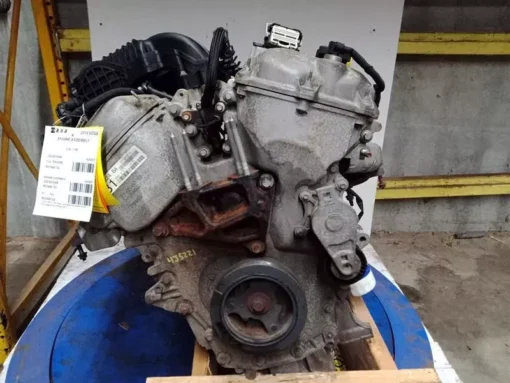The Ford Edge 3.5L engine refers to the 3.5-liter Duratec V6 engine used in various model years of the Ford Edge, particularly from its first generation (2007) up until around 2014 or later, depending on the trim and market. Here’s a breakdown of the key details about this engine:
Engine Specifications of Ford Edge 3.5L Engine
-
Engine Type: 3.5L V6 Duratec
-
Displacement: 3496 cc (3.5 liters)
-
Configuration: V6, 60-degree bank angle
-
Valvetrain: DOHC (Dual Overhead Camshafts), 24 valves
-
Fuel System: Sequential multi-port fuel injection
-
Horsepower:
-
Around 265–285 hp @ 6,250 rpm (varies slightly by year)
-
-
Torque:
-
Approximately 250–253 lb-ft @ 4,000 rpm
-
-
Compression Ratio: 10.3:1 (approximate)
Performance & Features
-
Smooth and refined power delivery
-
Good balance of performance and fuel efficiency for a midsize SUV
-
Timing Chain: Instead of a timing belt — less maintenance required
-
Typically mated with a 6-speed automatic transmission
-
Available in FWD or AWD configurations
Fuel Economy (Estimates)
(Varies slightly by model year and drivetrain)
-
FWD: ~18–20 MPG city / 25–27 MPG highway
-
AWD: ~17–19 MPG city / 23–26 MPG highway
Common Issues Ford Edge 3.5L Engine
Though generally reliable, some known issues reported by owners include:
-
Water pump failure (internal and timing chain-driven – can cause major damage if it fails)
-
Throttle body issues (causing hesitation or stalling)
-
Ignition coil/spark plug problems (especially over 100k miles)
-
Oil leaks (from valve covers or seals)
Maintenance Tips
-
Regular oil changes (synthetic oil recommended)
-
Monitor coolant levels and engine temperature — due to potential water pump issues
-
Replace spark plugs around 100,000 miles
-
Keep an eye on transmission fluid if experiencing rough shifting
Notable Years Using the 3.5L V6 in the Ford Edge
-
2007–2014 Ford Edge SEL, Limited, and SE
-
Phased out in some trims after 2015 in favor of smaller turbocharged EcoBoost engines
Would you like comparisons with the 2.0L EcoBoost or Ford Edge 3.5L Engine, or help with a specific model year or repair advice?
